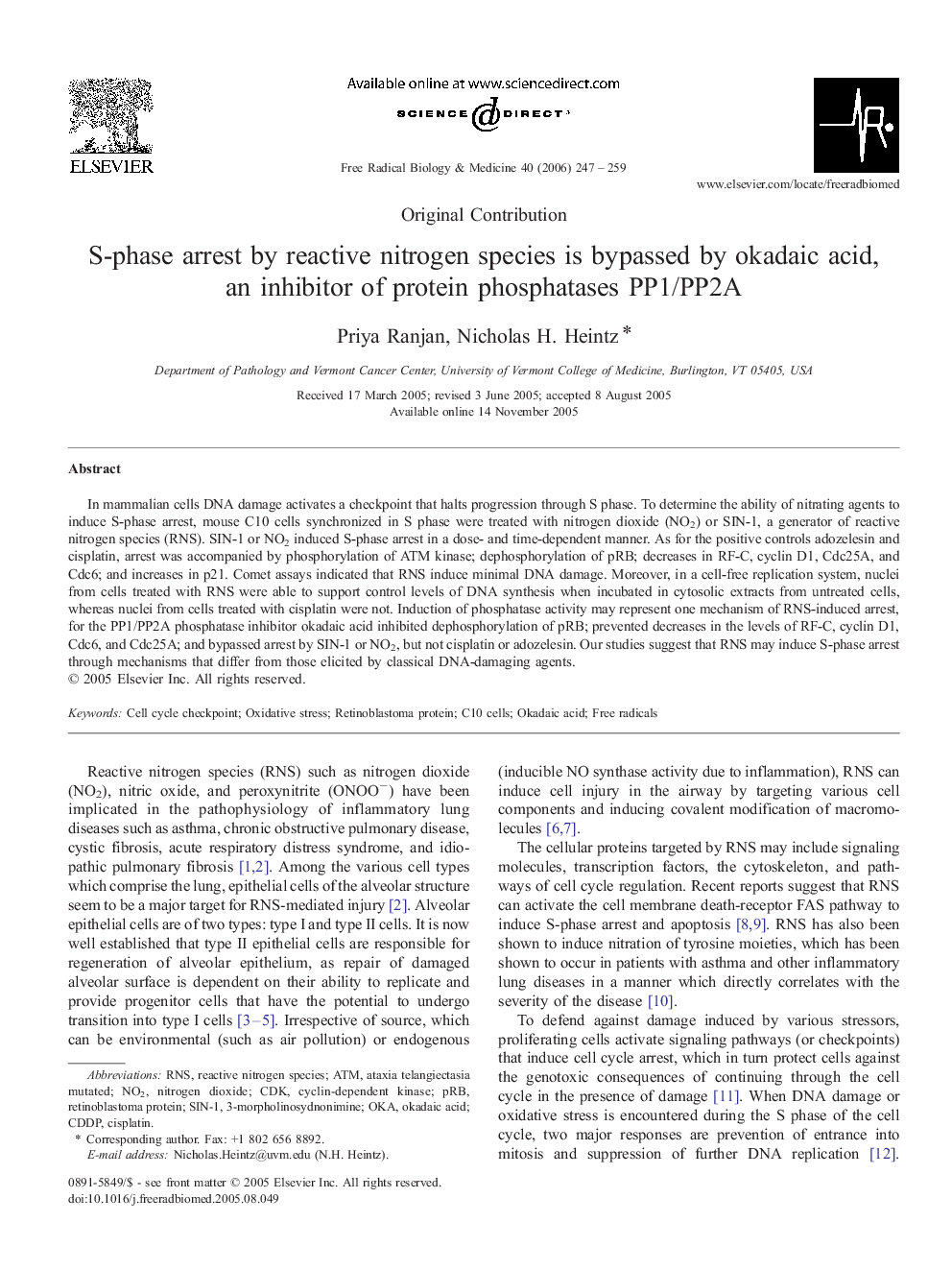| Article ID | Journal | Published Year | Pages | File Type |
|---|---|---|---|---|
| 1912100 | Free Radical Biology and Medicine | 2006 | 13 Pages |
In mammalian cells DNA damage activates a checkpoint that halts progression through S phase. To determine the ability of nitrating agents to induce S-phase arrest, mouse C10 cells synchronized in S phase were treated with nitrogen dioxide (NO2) or SIN-1, a generator of reactive nitrogen species (RNS). SIN-1 or NO2 induced S-phase arrest in a dose- and time-dependent manner. As for the positive controls adozelesin and cisplatin, arrest was accompanied by phosphorylation of ATM kinase; dephosphorylation of pRB; decreases in RF-C, cyclin D1, Cdc25A, and Cdc6; and increases in p21. Comet assays indicated that RNS induce minimal DNA damage. Moreover, in a cell-free replication system, nuclei from cells treated with RNS were able to support control levels of DNA synthesis when incubated in cytosolic extracts from untreated cells, whereas nuclei from cells treated with cisplatin were not. Induction of phosphatase activity may represent one mechanism of RNS-induced arrest, for the PP1/PP2A phosphatase inhibitor okadaic acid inhibited dephosphorylation of pRB; prevented decreases in the levels of RF-C, cyclin D1, Cdc6, and Cdc25A; and bypassed arrest by SIN-1 or NO2, but not cisplatin or adozelesin. Our studies suggest that RNS may induce S-phase arrest through mechanisms that differ from those elicited by classical DNA-damaging agents.
